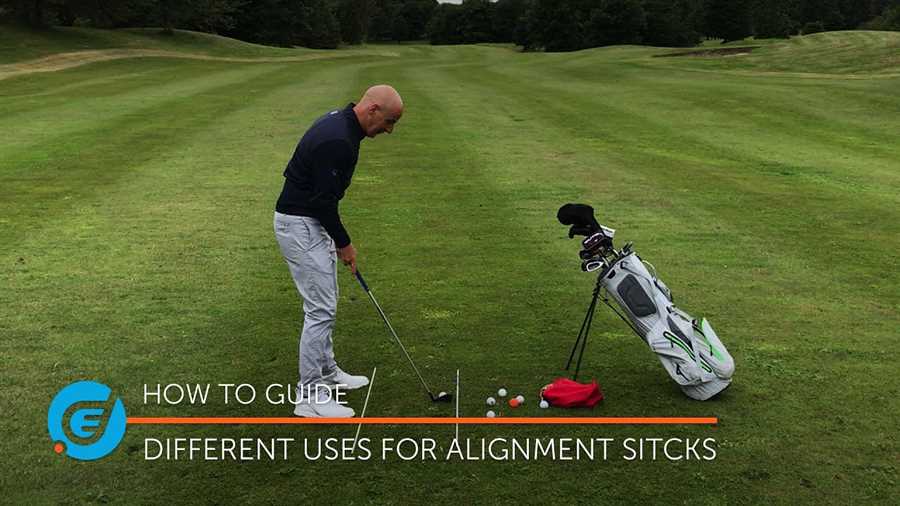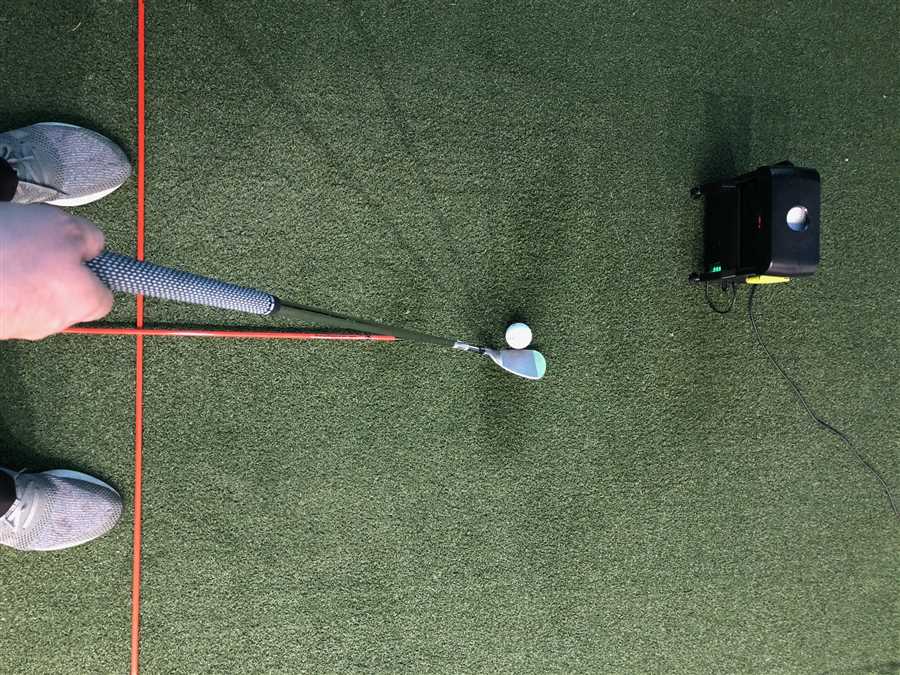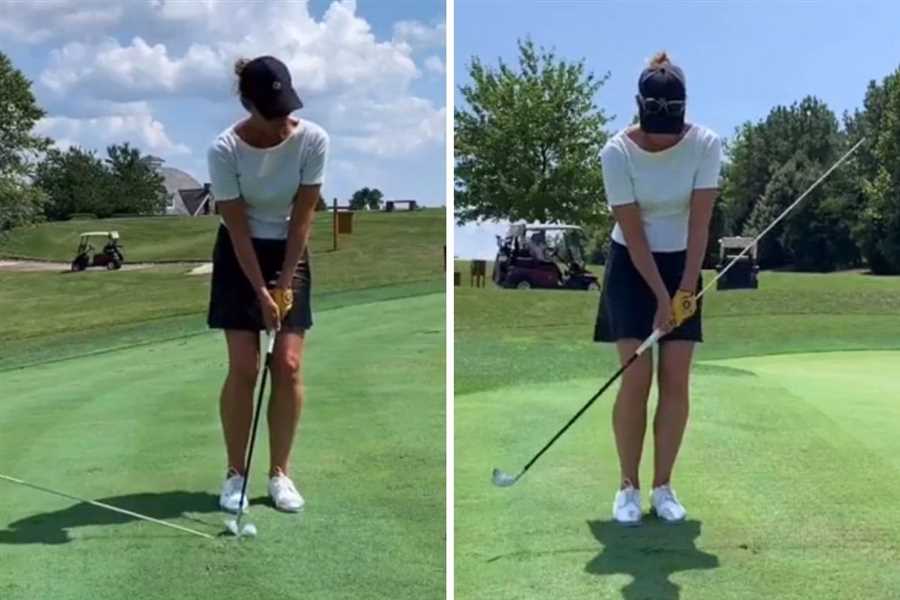Best alignment stick drills

Alignment sticks are a valuable tool for golfers of all skill levels. They help you to perfect your alignment and improve your swing mechanics. In this article, we will explore some of the best alignment stick drills that can take your game to the next level.
One of the most popular alignment stick drills is the “parallel target line” drill. To perform this drill, simply place two alignment sticks on the ground parallel to each other and about shoulder-width apart. Then, stand between the sticks and align your feet, knees, hips, and shoulders parallel to them. This drill helps you develop a consistent setup position and promotes a more accurate swing.
Another effective alignment stick drill is the “ball flight path” drill. For this drill, place an alignment stick on the ground directly in line with your target. Then, take your normal setup and practice swinging the club along the alignment stick, keeping it on the same path as the stick. This drill helps you improve your swing plane and promotes a more consistent ball flight.
One more alignment stick drill to consider is the “body rotation” drill. Place an alignment stick across your chest at shoulder height and hold it in place with your arms crossed over your chest. Then, practice making rotational movements with your upper body while keeping the alignment stick stable. This drill helps you develop proper body rotation and promotes a more powerful and efficient swing.
These are just a few of the best alignment stick drills that can help you improve your golf game. Incorporate them into your practice routine and watch as your alignment, swing mechanics, and overall performance on the course improve.
Why Alignment Stick Drills are Important for Golfers
Alignment stick drills are an essential training tool for golfers of all levels. These sticks, typically made of fiberglass or other durable material, help golfers improve their swing mechanics and ensure correct alignment on the course. By incorporating alignment stick drills into their practice routine, golfers can work on their posture, alignment, and swing path, all of which are crucial for consistent and accurate shots.
One of the primary benefits of using alignment stick drills is that they promote proper alignment at address. When a golfer sets up correctly, they have a better chance of hitting the ball on target. The sticks provide visual feedback, allowing golfers to see if their feet, hips, and shoulders are aligned in the desired position. By consistently practicing with alignment sticks, golfers can develop muscle memory and engrain proper alignment habits into their swing.
Additionally, alignment stick drills help golfers improve their swing path. The sticks can be placed on the ground to create a visual target line, allowing golfers to see if their club is traveling on the correct path during the swing. By practicing with these sticks, golfers can develop a more efficient and consistent swing, leading to better ball contact and increased accuracy.
Overall, alignment stick drills are an invaluable tool for golfers looking to improve their game. By focusing on alignment and swing mechanics, golfers can make significant improvements in their accuracy and consistency. Whether you’re a beginner or an experienced golfer, incorporating alignment stick drills into your practice routine can help take your game to the next level.
Benefits of Using Alignment Stick Drills
Alignment stick drills are a valuable tool in golf training that can help improve a player’s performance and consistency on the golf course. These drills involve the use of alignment sticks, which are long and thin rods that golfers can place on the ground to assist with proper alignment and swing mechanics.
One of the main benefits of using alignment stick drills is that they promote proper alignment. By placing the alignment stick parallel to the target line, golfers can visually see if their body and club are aligned correctly. This helps to ensure that the golfer is aiming in the right direction and reduces the chance of hitting errant shots.
- Improves Swing Mechanics: Alignment stick drills also help golfers improve their swing mechanics. By placing the alignment stick at different positions during the swing, golfers can work on their takeaway, backswing, downswing, and follow-through. This allows them to develop a more efficient and effective swing, resulting in better ball striking and increased distance.
- Enhances Consistency: Another benefit of alignment stick drills is that they promote consistency in the golfer’s swing. By consistently practicing proper alignment and swing mechanics, golfers can develop muscle memory that will carry over to their on-course performance. This leads to more consistent shots and improved overall performance.
- Aids in Practicing Alignment on the Course: Alignment stick drills can also be used during practice rounds on the golf course. By placing the alignment stick on the ground during their pre-shot routine, golfers can ensure that they are consistently aligning themselves with their intended target. This helps to build confidence and reduces the chance of hitting wayward shots.
In conclusion, alignment stick drills offer numerous benefits to golfers. They promote proper alignment, improve swing mechanics, enhance consistency, and aid in practicing alignment on the course. Incorporating alignment stick drills into a golf training regimen can help golfers of all skill levels improve their game and achieve better results on the golf course.
Alignment Stick Drill 1: Alignment Check

The Alignment Check drill is a basic and essential drill that helps golfers ensure they are properly aligned to their target. It involves the use of alignment sticks, which are placed on the ground to create a visual guide for alignment.
To perform this drill, start by placing one alignment stick on the ground parallel to the target line. Then, stand behind the stick and position yourself so that your feet, hips, and shoulders are all parallel to the stick. This will help ensure that you are properly aligned to your target.
Next, place a second alignment stick on the ground perpendicular to the first stick, creating a cross shape. This stick should be positioned near your feet, pointing towards your target. This will help you check the alignment of your feet and clubface.
Once the sticks are in place, take your setup position and take a few practice swings. Pay close attention to your alignment, making sure that your feet, hips, and shoulders are all aligned with the first stick, and that your feet and clubface are aligned with the second stick.
By regularly practicing the Alignment Check drill, you can improve your alignment, which can lead to more consistent and accurate shots on the golf course. It is a simple yet effective drill that can benefit golfers of all skill levels.
How to Perform the Alignment Check Drill

The alignment check drill is a crucial part of improving your golf swing. It helps you align your body and club properly, which is essential for consistent and accurate shots. Here’s how you can perform the alignment check drill effectively:

1. Set up your alignment sticks

Start by placing two alignment sticks parallel to each other on the ground. Position one stick just outside of your toes, pointing towards your target. Place the other stick perpendicular to the first stick, pointing towards the ball.
2. Stand between the sticks
Position yourself between the alignment sticks, ensuring that your toes line up with the first stick that is pointing towards the target. This helps you align your body properly, ensuring that your feet, knees, hips, and shoulders are all in the correct position.
3. Check your club alignment
Take your golf club and rest it against the alignment stick that is pointing towards the ball. This helps you ensure that your clubface is aligned correctly and pointing towards your target. Make any necessary adjustments to ensure proper alignment.
4. Practice your swing
With the alignment sticks in place, practice your swing. Pay attention to how your body and club move during the swing and make corrections as needed. The alignment sticks serve as reference points, helping you maintain proper alignment throughout your swing.

Performing the alignment check drill regularly can greatly improve your golf swing. It helps train your body to consistently align properly, leading to more accurate shots and better overall performance on the golf course.
Common Mistakes to Avoid
When using alignment sticks for golf drills, it’s important to be aware of common mistakes that can hinder your progress. By avoiding these mistakes, you’ll be able to get the most out of your training sessions and improve your alignment and swing. Here are some common mistakes to be mindful of:
1. Incorrect Placement: One of the most common mistakes golfers make is placing the alignment sticks incorrectly. Ensure that the sticks are aligned with your target line and parallel to each other. This will help you develop a consistent and accurate swing.
2. Lack of Focus: Another mistake to avoid is a lack of focus during the drills. It’s important to concentrate on your alignment, body positioning, and swing mechanics. Stay present and fully engage with each repetition to maximize the effectiveness of the drill.
3. Overdependence: While alignment sticks are a valuable tool, relying too heavily on them can hinder your progress. It’s important to practice without the sticks as well, to develop a natural feel for alignment and swing. Gradually reduce your reliance on the sticks as you gain confidence and consistency in your technique.
4. Ignoring Feedback: Paying attention to feedback is crucial for improving your technique. Avoid the mistake of dismissing or ignoring feedback from your coach or training partners. Actively seek feedback and make the necessary adjustments to correct any alignment or swing issues.
5. Rushing Through Drills: Lastly, rushing through the drills is a common mistake that can limit your progress. Take your time to properly set up each drill, focus on your technique, and execute the movements correctly. Quality practice is more important than quantity, so prioritize precision and technique over speed.
Avoiding these common mistakes will help you maximize the benefits of using alignment sticks in your training. Stay focused, maintain proper alignment, and listen to feedback to improve your golf game.
5 Best alignment stick drills
Features
| Part Number | PATRODB |
| Model | PATRODB |
| Color | Black |
| Is Adult Product |
Features
| Part Number | CT29024 |
| Model | CT29024 |
| Color | Yellow |
| Is Adult Product | |
| Release Date | 2020-10-01T00:00:01Z |
Features
| Color | Red |
Q&A:
What are some common mistakes to avoid when learning a new language?
Some common mistakes to avoid when learning a new language include relying too heavily on translation, neglecting speaking practice, not immersing oneself in the language, avoiding making mistakes, and not practicing regularly.
Why is relying too much on translation a common mistake to avoid?
Relying too much on translation can hinder language learning because it prevents you from thinking in the target language and hampers your ability to communicate effectively. It’s important to try to think in the language you are learning and not constantly translate between languages.
How does neglecting speaking practice affect language learning?
Neglecting speaking practice can hinder language learning because speaking is a crucial skill to develop in order to communicate effectively. Without practice, you may struggle with pronunciation, fluency, and overall confidence in speaking the language.
Why is it important to immerse oneself in the language when learning a new language?
Immersing oneself in the language is important because it exposes you to the culture, pronunciation, and natural usage of the language. Through immersion, you can better understand and internalize the language, making it easier to learn and become fluent in.
Why is it necessary to practice regularly when learning a new language?
Regular practice is necessary when learning a new language because language skills require consistency in order to improve. By practicing regularly, you can maintain what you have learned, reinforce your knowledge, and make progress towards fluency.
What are some common mistakes to avoid when learning a new language?
Some common mistakes to avoid when learning a new language are not practicing regularly, relying too heavily on translation, neglecting listening and speaking skills, and being afraid of making mistakes. It’s important to practice consistently, immerse yourself in the language, focus on comprehension rather than translation, and embrace the learning process.
Conclusion
In conclusion, avoiding common mistakes is crucial in various aspects of life. Whether it is in communication, decision making, or goal setting, being aware of these errors can greatly enhance one’s chances of success. By avoiding the mistake of poor listening skills, one can establish stronger relationships and create better understanding. Additionally, staying away from hasty decision making can lead to better outcomes and prevent regret. Finally, setting realistic and achievable goals instead of aiming too high can ensure a sense of accomplishment and motivate further progress. By learning from these common mistakes and making a conscious effort to avoid them, individuals can enhance their personal and professional lives.









